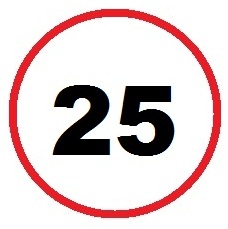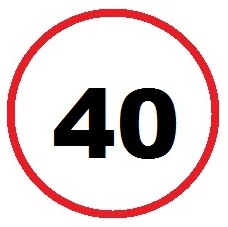Australia So Much to See
A. Yes, this law applies throughout South Australia, and has been in place since 1st September 2014. Some other states have
similar laws.
See also what other states have similar laws (40 km/h) and the different types of vehicles covered in each state. Different rules apply in different states for both emergency service vehicles and school zones.
Across the states, one
thing is consistent with those that have speed limits when passing stopped emergency service vehicles. Even in a multi landed
road, all traffic passing must adhere to the low speed limit and this includes traffic travelling in the opposite direction, with
the exception being of there is a media strip dividing the road in which case the law does not apply to those travelling in the opposite
direction.
Vigilant driving is required to ensure before slowing suddenly that traffic close behind you can also
slow at the same rate, and to ensure the safety of yourself and other traffic on the road in all lanes.
Check school zone
times for each state as some are permanent, some throughout the school day, and some at times when children will be arriving at school
in the morning and departing in the afternoon. Signs will show speeds and times as there may be local variations, including
different times, or higher speed limits where a school zone is on a highway rather than in a town.

1. South Australia
25 k/ph speed limit when passing an emergency service speed zone
From 1st September 2014 drivers must also slow down and drive
at a safe speed, and in any case no greater than 25 km/h when passing an emergency service speed zone.
An emergency service speed
zone is an area of road in the immediate vicinity of an emergency vehicle that has stopped and is displaying a flashing blue or red
light, or between 2 sets of flashing blue or red lights on a length of road on which an emergency vehicle has stopped [Road Traffic
Act 1961 (SA) s 83].
The speed restriction does not apply where a person is driving on a road that is divided by a median strip
and the emergency service speed zone is on the other side of the road.
Drivers are required to be alert and responsive to such
situations as the speed restriction applies in any case where a police patrol car’s red and blue lights have been activated. This
includes, for instance, where a driver has been pulled over by police for speeding on a freeway and the patrol car’s red and blue
lights are flashing, even though this is not technically an emergency.
Drivers of emergency vehicles such as police and emergency
workers are exempt from these provisions. The definition of an "emergency worker" includes members of the armed forces, the Australian
Federal Police and the Australian Border Force.
Sourced from The Law Handbook South Australia
Speed limit when passing emergency service vehicles South Australia 25 km/h
Be aware that unlike other states with higher limits for school zones within school hours, that in South Australia the speed limit
is 25 km/h in school zones, and this extends to any time even outside of school hours that children are present in the zone.
The 25 km/h speed limit also applies when passing a school bus which has stopped for picking up or setting down children. These buses will activate a yellow flashing light.
Motorist are required to slow down to the 25km/h speed limit between school zone signs when children are present, at school crossings
when the lights are flashing and when passing a school bus that has stopped to pick up or drop off children.
25km/h speed limits
· Between school crossing (koala crossing) signs that state
when lights flashing.
· Between School Zone signs that state when children present.
This applies when a child is in the zone, including outside of school hours, and whenever a child is on the road, footpath, median
strip, or even on a bicycle.
· A 'child' means a person less than 18 years of age,
and includes a student of any age wearing a school uniform.
· A School Zone is also
marked with zig zag lines on the road where practicable, to show that you are approaching a School Zone.
· You must not exceed 25 km/h when passing, in either direction, a school bus that has stopped for the purpose of setting down or picking
up children.
· Passing a stationary emergency services vehicle that has its blue and/or
red lights flashing.
2. Victoria

Effective from 1 July 2017, you must slow down to a speed that would enable you to stop safely when approaching and passing enforcement,
emergency or escort vehicles that are stationary or moving slowly (less than 10 km/h)*, and have either:
Red and blue flashing
lights
Magenta (purple flashing lights)
An alarm sounding.
This includes:
Police vehicles
Ambulance Victoria vehicles
Metropolitan Fire
Brigade vehicles
Country Fire Authority vehicles
Forest Fire Management Victoria vehicles
State Emergency Service vehicles
Search and
Rescue Services
VicRoads Transport Safety Service vehicles (magenta (purple) flashing lights)
Enforcement vehicles (magenta/purple flashing
lights) under the control of a state transport body including VicRoads, DEDJTR and Taxi Commission enforcement vehicles
Other emergency
patient transport vehicles with red and blue flashing lights.
* A fire truck extinguishing roadside spot fires is an example of a slow
moving emergency vehicle.
The rule doesn’t apply to special purpose vehicles with yellow flashing lights.
You must not exceed
40 km/h when passing the vehicle and not increase your speed until a safe distance from the scene.
Sourced from Vic Roads Safety and Road Rules
* These speed limits are permanent and apply regardless of the day or time
Speed
limits when passing school buses outside of school zones have not been implemented but slowing down and extra vigilance is needed.
There have been fatalities involving children at bus stops.
Speed limit in school zones in Victoria 40 km/h
School speed zones are reduced-speed areas that operate near schools. They’re designed to keep kids safe by lowering the speed limit
at peak times when children are travelling to and from school.
Find out more about road safety near schools.
What’s the speed
limit?
In most cases the speed limit during school speed zone times is:
• 40 km/h (when the original speed limit is less than 80 km/h)
• 60 km/h
(when the original speed limit is 80 km/h or higher).
These speed limit and operating times will be clearly displayed on nearby signs.
When
do school speed limits apply?
Types of school speed zones:
• Permanent
40 km/h zones *
• Variable, time-based zones. Variable electronic signs. These signs are often used on roads with high speeds or large traffic volumes. The speed limit displayed will change depending on
the time of day and traffic conditions.
Speed limit when passing emergency service and breakdown service vehicles in Western Australia 40 km/h
3. Western Australia

SLOMO stands for Slow Down, Move Over, and requires drivers to slow down around stationary emergency vehicles, tow trucks, Incident
Response Service vehicles and motor break-down service vehicles which are displaying flashing lights while attending an incident.
“Slowing down to 40 km/h and moving over if it is safe to do so, will provide a consistent response to unexpected incidents
on our roads and a safe environment for those emergency and incident response workers.”
The SLOMO laws require motorists to slow
down to 40 km/h when passing vehicles used by WA Police Force, St John Ambulance, Department of Fire and Emergency Services, RAC WA,
Main Roads WA Incident Response Service and towing companies on site to salvage or tow vehicles.
Speed limit in school zones in Western Australia 40 km/h
School Zone speed limits:
40 km/h School Zone for adjoining speed zones of 50, 60 and 70 km/h; and
60 km/h School Zone for adjoining
speed zones of 80 and 90 km/h.
School Zones are effective on "School days" which are those days excluding weekends and local
public holidays, within school terms set by the Department of Education.
The times of operation shown on School Zone signs
shall be 7.30 am to 9.00 am and 2.30 pm to 4.00 pm.
Variations to these times shall be permitted in the Gascoyne, Pilbara and
Kimberley Regions only, where school operating hours can vary markedly from normal school start and finish times applying in the rest
of the State.
How do you know if it is a school day?
School zones across the state are currently designated by static speed signs. Although
these signs show the required speed limit, motorists aren’t always aware if they are travelling within the time periods shown or during
the dates that schools operate.
To address this issue and improve safety for our most vulnerable road users, the State Government
has committed $36 million to install solar-powered electronic school zone signs at eligible schools across the state. These
are currently being implemented.
The new signs are highly visible and display the 40 km/h speed limit during nominated
school zone times only, providing a real-time reminder to motorists to slow down through school zones.
Sourced from Main Roads WA and Main Roads WA